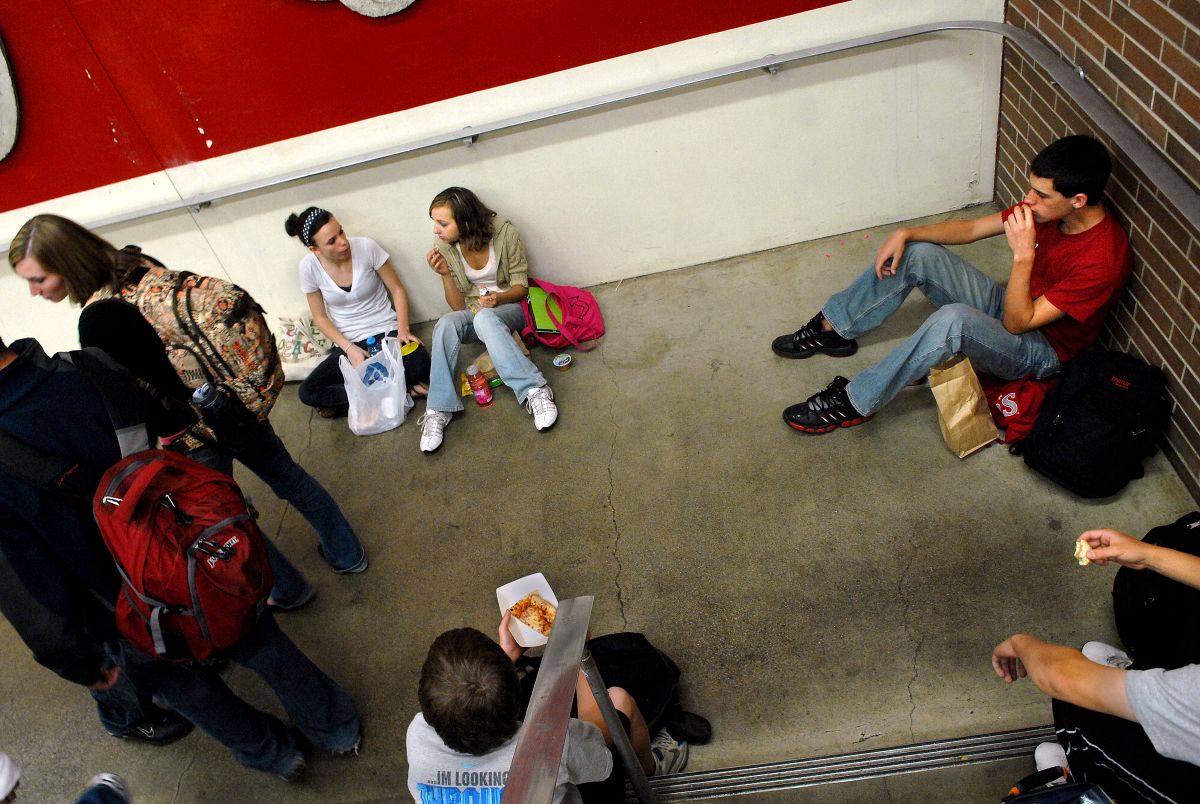Second bond issue ahead
Schools to seek input on $228 million proposal

With surveys showing the economy is the biggest concern among voters and financial news seeming to get worse daily, Spokane Public Schools officials are asking what the public thinks about a $288 million bond proposal that wouldn’t increase taxes but prevents them from going down.
The proposal, expected to be on the March ballot, is the second phase of a four-part plan adopted by the school board in 2002 to pay for building projects and technology and security improvements.
That plan kicked off in 2003, when voters passed the first six-year bond, for $165.3 million. Combined with $67.5 million in state matching funds, it has paid to replace three elementary schools and for ongoing renovations at Rogers and Shadle Park high schools, along with many smaller projects.
Among the biggest projects in the 2009 proposal are replacing most of Ferris High School and replacing or renovating four elementaries.
Sharing the ballot with the bond will be a three-year levy that would raise $50 million a year to help make up the difference between what the state provides for educating students and the district’s actual cost. As with the bond, it would not raise taxes, but replace a levy that’s expiring.
If voters approve the 2009 bond proposal, the long-range plan calls for putting another one on the ballot in 2015 and a final one in 2021. If each proposal is approved, every school building would have had major work or been replaced by 2027.
When that plan was adopted seven years ago, “we told the community that through good times and bad times, let’s keep our buildings and technology up so we don’t get a backlog like we have with our city streets,” said Associate Superintendent Mark Anderson.
The district has pledged to keep the cost of each bond flat, at about $1.96 per thousand dollars of assessed property value. That amounts to $392 per year for the owner of a home assessed at $200,000.
“We do think that’s a positive point,” Anderson said.
Even if the rate is flat and even though Spokane voters historically have supported school proposals, the idea of a big-ticket ballot issue could be a tough sell when informational meetings start this week.
The city has been spared the big drop in housing values that’s hit other parts of the country, and motorists in recent weeks have seen some relief from record-high gas prices. Still, the cost of food and other necessities remains high and Americans have seen turmoil on Wall Street, corporate bailouts and rising jobless rates. On Thursday the federal government seized Seattle-based Washington Mutual Inc., the biggest banking failure in U.S. history.
Among the polls indicating big concern for pocketbook issues is one commissioned by Seattle and Portland television stations. Taken before the Washington Mutual meltdown, it showed that more than half of registered Washington voters think the economy should be the biggest priority for the next president – more than the combined total of those citing the war in Iraq, terrorism, health care and other issues.
Whether that will hurt the school district depends on what happens before the bond hits the ballot, said David Nice, political science professor at Washington State University. The district “probably is going to run into a fair number of people … who will be nervous about approving something that big unless the economy is making a big improvement,” Nice said.
But, he said, it helps that the school district can point to specific improvements to be funded by the money and those already completed with money approved in 2003. Boosters need also to sell the benefits to the entire city, whether it’s more jobs, students better prepared to enter college and the work force, or the impact of good schools on a region’s ability to attract and retain high-caliber people, he said.
The money on next year’s proposal would be matched by an expected $44 million from the state, for a total of $332 million. Plans for spending that money could change based on input during the public meetings, said Greg Brown, district director of capital projects.
The school board hopes to finalize a ballot proposal in December.
“We’ve been working on this for about a year now and we have been out in all schools, meeting not only with the staff but with parent representatives,” Brown said. “So I feel that the plan does represent a good cross-section of what the community wanted and the people who use the buildings.”
Based on those talks, the preliminary list includes replacing most of Ferris; renovating or replacing Westview, Jefferson, Hutton and Finch elementaries; building a new gym at Salk Middle School; making improvements to athletic fields at three high schools; and tackling smaller projects throughout the district.
It also would include such projects as replacing phone and records-keeping systems. And it can be used for maintenance emergencies.
“If we didn’t have the bond and a boiler goes out, that’s going to come out of the general fund” that pays to keep buildings open and teachers in classrooms, Anderson said. “That means we’re going to have some big challenges.”